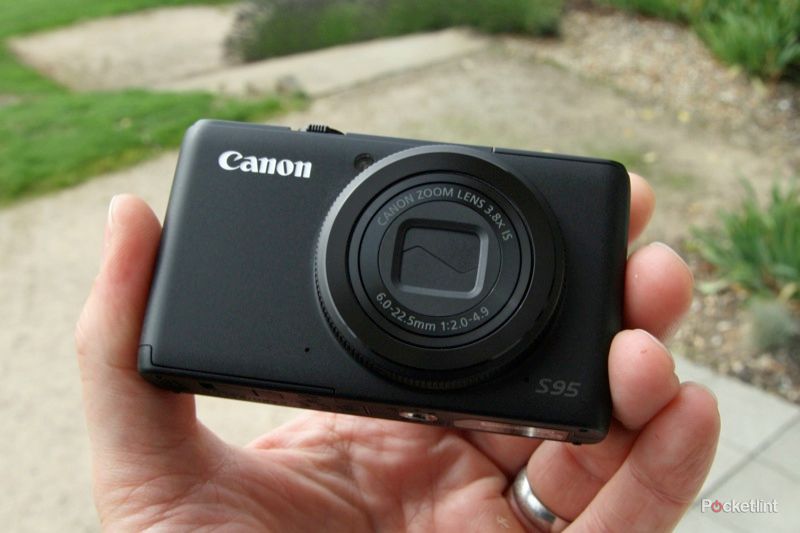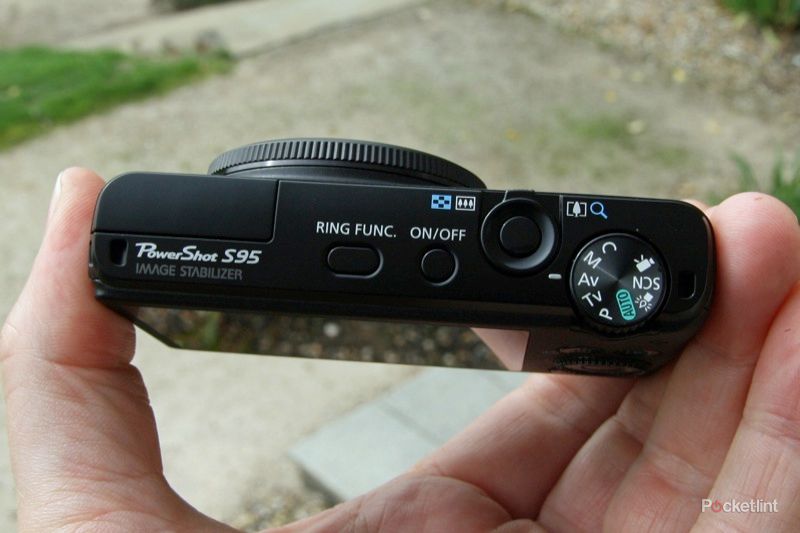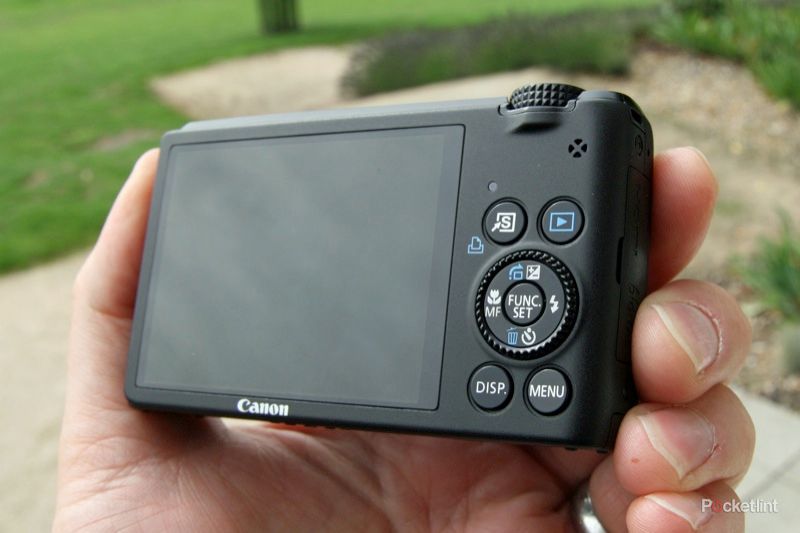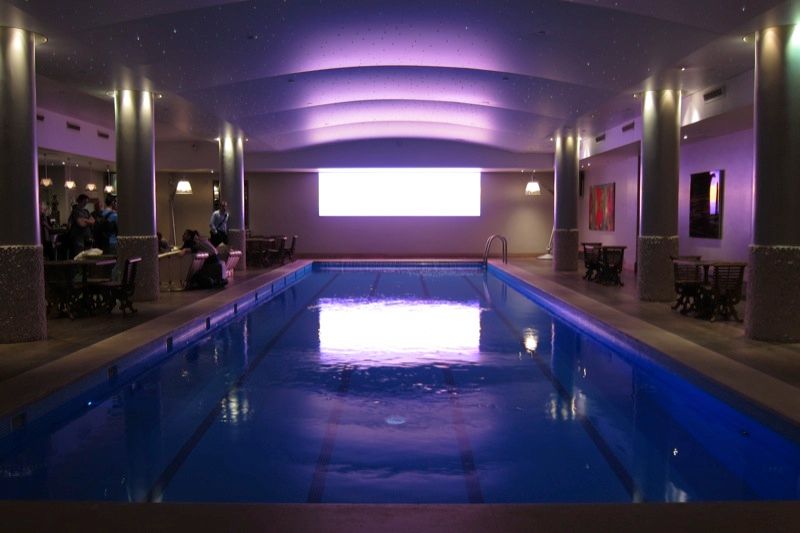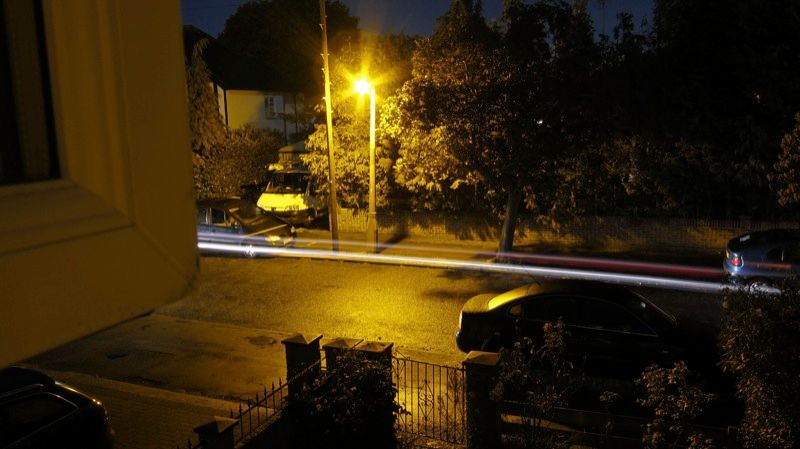The Canon PowerShot S95 updates the S90, one of our favourite cameras of 2009. It occupies the same position at the top of Canon’s compact range, theoretically slotting in under the G12. It shares many features of the G12 that will appeal to more creative photographers, whilst retaining a form factor closer to Canon’s IXUS range.
Our quick take
Gripes are few with the Canon PowerShot S95, but following up on the excellent S90, that’s to be expected. We’ve seen the improvement of the video offering, but it certainly isn’t the most sophisticated video shooting compact out there.
But to a certain extent the S95 is all about stills capture, and the controls and customisation options make it an excellent camera for those that want a little more from a compact. The image quality, the ease of use and the fun features that Canon has packed in make the S95 a hot performer.
The RRP at £399 is a little high, but it is already plummeting. It’s still undoubtedly expensive for a compact, but you do get a lot for your money.
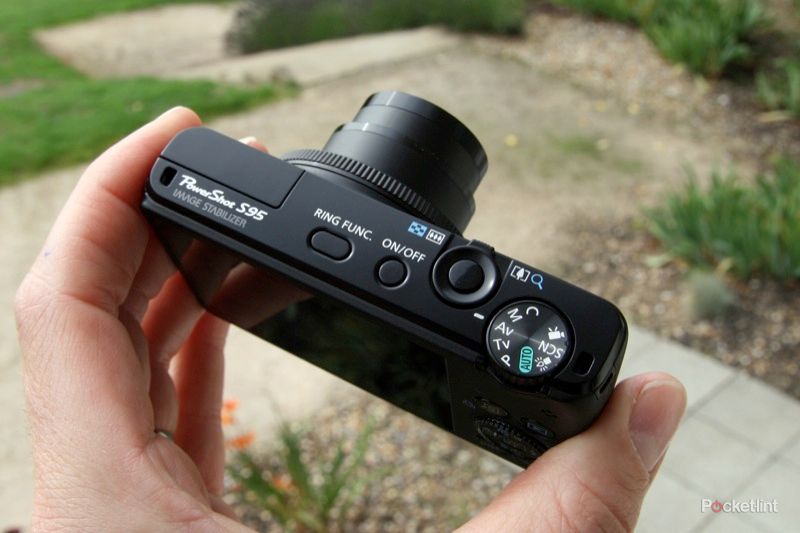
Canon PowerShot S95 - 4.5 / 5
| FOR | AGAINST |
|---|---|
|
|
In terms of design and dimensions, little has changed from the S90. Measuring 99.8 x 58.4 x 29.5mm, and weighing 193g with battery and SD card, it is certainly pocket-friendly and light enough to carry around pretty much everywhere. The S95 dispenses with flamboyance and chooses a black anodised finish. It has an understated elegance: it doesn’t need to be showy, with an assured confidence about its design.
The PowerShot S95 is all about control and that means it isn’t minimalist or touchscreen. Across the top you get a regular assemblage of shutter button with encircling zoom toggle, the power switch and mode dial. You’ll also find the Ring Func button which allows you to change the S95’s most distinctive feature - the barrel ring around the 28-105mm (in 35mm terms) lens, which we’ll come to later.
On the back of the camera is the traditional layout of a 3-inch LCD display with a 461k-dot resolution next to a four-way controller with shortcuts (focusing, self timer, flash and exposure compensation, although in Auto mode you get subject tracking AF in here too). There is a central Func Set to confirm choices and change relevant shooting settings, whilst the four-way controller is edged by a rotating ring that can again adjust values. Finally there are four buttons that take care of the menus, display information, playback and finally a user defined shortcut button.
The shooting mode dial offers up the usual suspects you’ll find on a compact camera: smart Auto shooting, scene modes, low light and video. Moving into the high-end, the S95 also gets program, aperture priority, shutter priority, full manual and finally a custom mode.
The real ace in the S95’s pack is having all these control methods at your disposal, so you don’t have to dive into the menus constantly to change settings. Using the front and rear control rings, you can balance settings to get the exposure you want when shooting in manual, with the shortcut button offering up ISO settings for example.
The front control ring can be set to change a range of values (some more useful than others) but we like the default setting of aperture for Av and shutter for Tv shooting modes, as you quickly know where you are and what you are doing. The rear ring then picks up exposure compensation; so if you are in a situation where cameras are prone to making metering errors (snow, black objects) you can quickly grab your shot. You can also custom set the control ring if the existing options don’t tickle your fancy.
In Auto mode you lose the ability to customise - the front ring will change the zoom whilst the shortcut button is disabled. You also have to rely on the camera picking out mode (such as portrait or macro) as with other “intelligent auto” systems. Essentially you can only really change the aspect ratio and resolution in Auto mode as far as settings are concerned, as the on-screen menus are context dependent so you only get the option to change settings that apply to your shooting mode.
Program, by contrast, allows much greater freedom with the full settings menu on offer - as it is in AV, TV and M modes. Changing settings is a breeze using the on-screen menus through the Func Set button. This will let you change things like ISO, white balance and so on, as well as selecting from “My Colors” which gives you the option of black and white, vivid, etc, including things like metering (evaluative, centre weighted, spot), drive (single shot, continuous (1.9fps), continuous AF). Here, you’ll also find one of the new features - aspect switching.
Switching aspect ratio has become increasingly popular, with rival models such as the Panasonic Lumix LX5 promoting this feature to have its own switch. In the case of the S95, the feature can be programmed to the control ring on the front (if it’s that important to you), or quickly changed through the func menu. On offer are 4:3, 16:9, 3:2, 1:1 and 4:5 giving you plenty of choice of picture style.
Hiding within the scene modes you'll find the usual suspects of portrait, landscape and beach, but far more exciting are the more creative options: like Color Accent, Color Swap, HDR, Nostalgic, Fish-eye Effect and Miniature Effect. If you thought the S95 took itself too seriously, then the addition of these options means you have a camera that not only offers you manual control, but also plenty of fun and easy options to play around with. With so many options, however, just remember to check before you press the shutter - on too many occasions we switched mode, grabbed a shot and found that we’d left it set with ISO 1000 and a colour accent.

Video capture gets a place on the mode dial and if there is one criticism of the S95, it is that there is no instant video capture button. We’d have expected it to be an option on the assignable shortcut button, but it isn’t. As a result, you’ll have to switch the dial before you can capture video. But then Canon aren’t really pushing the S95 as a powerful camera for video and perhaps rightly so.
Whilst some of Canon’s IXUS range offers Full HD video capture, it isn’t a feature that has come to the S95. Instead you have HD of the 720p variety, captured at 24fps. When pressed on this issue in regards to the G12 (which shares the same sensor and processor arrangement) Canon told us there would be too much data for this processor. There is some confusion here, with Canon pushing the “HS System” label on the S95 and the G12, just as it has with the IXUS 300 and IXUS 1000. In fact the former models have a 1/1.7 type CCD whilst the latter have a backlit 1/2.3 type CMOS sensor, which leaves us scratching our heads about the “HS System” tag.
The long and short of it is that the S95 doesn’t offer Full HD, and whilst the HD video it offers is perfectly acceptable (a straight sample can be found here on YouTube), there are other limitations to consider. You don’t get optical zoom in video, although you can engage the digital zoom which we always advise against. You also don’t get autofocus during shooting, so your focal point when you start filming remains throughout the video.
The niceties you do get when shooting video are the options to use the miniature effect (above), the colour accent and colour swap functions (YouTube sample here), along with the My Color tints. Miniature is our pick of the bunch, because its pseudo time-lapse effect gives an interesting twist to busy scenes.
With video not being a shining star the S95 is more likely to appeal to those who are primarily interested in having a lot of control over their stills photography. As we’ve seen there is plenty of control and you get plenty of options when it comes to the settings too, some of which we have already covered.
The ISO range ordinarily runs from 80 to 3200, set in small increments that you can individually select when you wrestle control away from the Auto ISO settings. Auto ISO can also be tamed, so you can pick an upper point (from 400 to 1600) depending on your tolerance for the noise that creeps in as the ISO rises. The Low Light position on the dial sees a drop to 2.5 megapixels, but gives you access to ISO 6400 and ISO 12800.
Noise does start to be more noticeable around ISO 400 and gets increasingly more prominent as you move up the scale. It isn’t devastating and up to about ISO 1000 you might find it acceptable. Beyond this and it starts to get more limiting, the top settings looking distinctly mottled.
The S95 comes with an F/2.0 offering at the wide angle which does offer some scope for better low light shooting without bumping the ISO up high, along with Hybrid Image Stabilisation. You get to choose which degree of stabilisation you want too. But for those interested in venturing out after dark, the shutter will give you up to 15 seconds.
The versatility on offer is backed up by excellent image quality, with detail retained where lesser compacts give up. There is evidence of some fringing in high contrast shots and at the far end of the zoom images are noticeably softer. There is a touch of distortion at the wide angle, but nothing that isn’t typical of compact lenses and nothing that will cause too much concern.
Colour reproduction by default is good, with realistic results punctuated by reds that are perhaps a little too vivid, although the colour settings provide plenty of scope to change this in-camera, whilst minimal editing after the matter in Photoshop (or similar) will help to normalise things.
The HDR scene mode tries to address the problem of dynamic range, that some cameras suffer from. In this case it seems to have a more noticeable effect than the dynamic correction settings. HDR takes three shots and combines them into a single image, picking up the highlights and low lights. The results are noticeably different from straight shooting, although you do seem to lose some of the vibrancy in the process. You’ll need to use a tripod too, as any movement will be reflected in the final shot, so it is only really useful for shooting static subjects - however, as in the example below, it will preserve detail in the sky that would normally be lost.
Again, shooting in the HDR mode restricts your options, but you can apply some colour options, including black and white, sepia and vibrant. If this all seems too simplistic for you, the S95 also offers auto-bracketing so you could combine the images yourself. The Canon PowerShot also offers RAW capture which will appeal to those looking to eek out all the details. We found that the CR2 file couldn’t be read by any of our existing photo software, but the bundled Digital Photo Professional will take care of things for you.
The flash sits on the right-hand shoulder of the camera and offers a range of flash modes. Red-eye wasn’t a significant problem, but the pop-up nature of the flash does mean that you’ll sometimes have your fingers in the wrong place when it comes up.
Battery performance, however, isn’t great. Officially listed as 200 shots, we found ourselves with a flat battery after around 150 shots with a handful of video too. The battery resides under a flap on the bottom along with the SD/SDHC/SDXC card. On the side you’ll find Mini-USB and mini HDMI connections.
To recap
The image quality, the ease of use and the fun features that Canon has packed in make the S95 a hot performer

